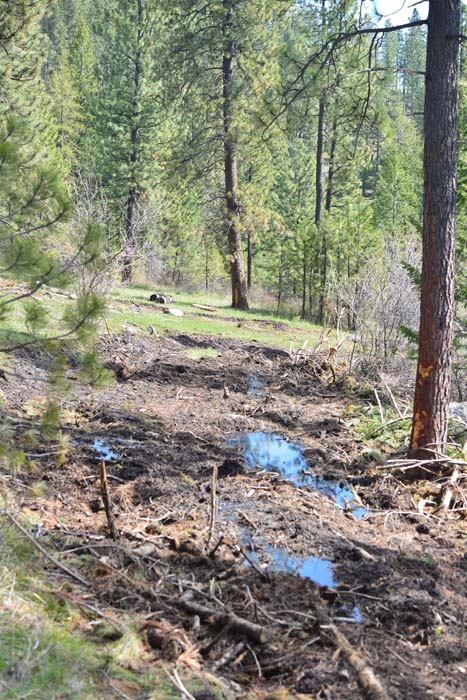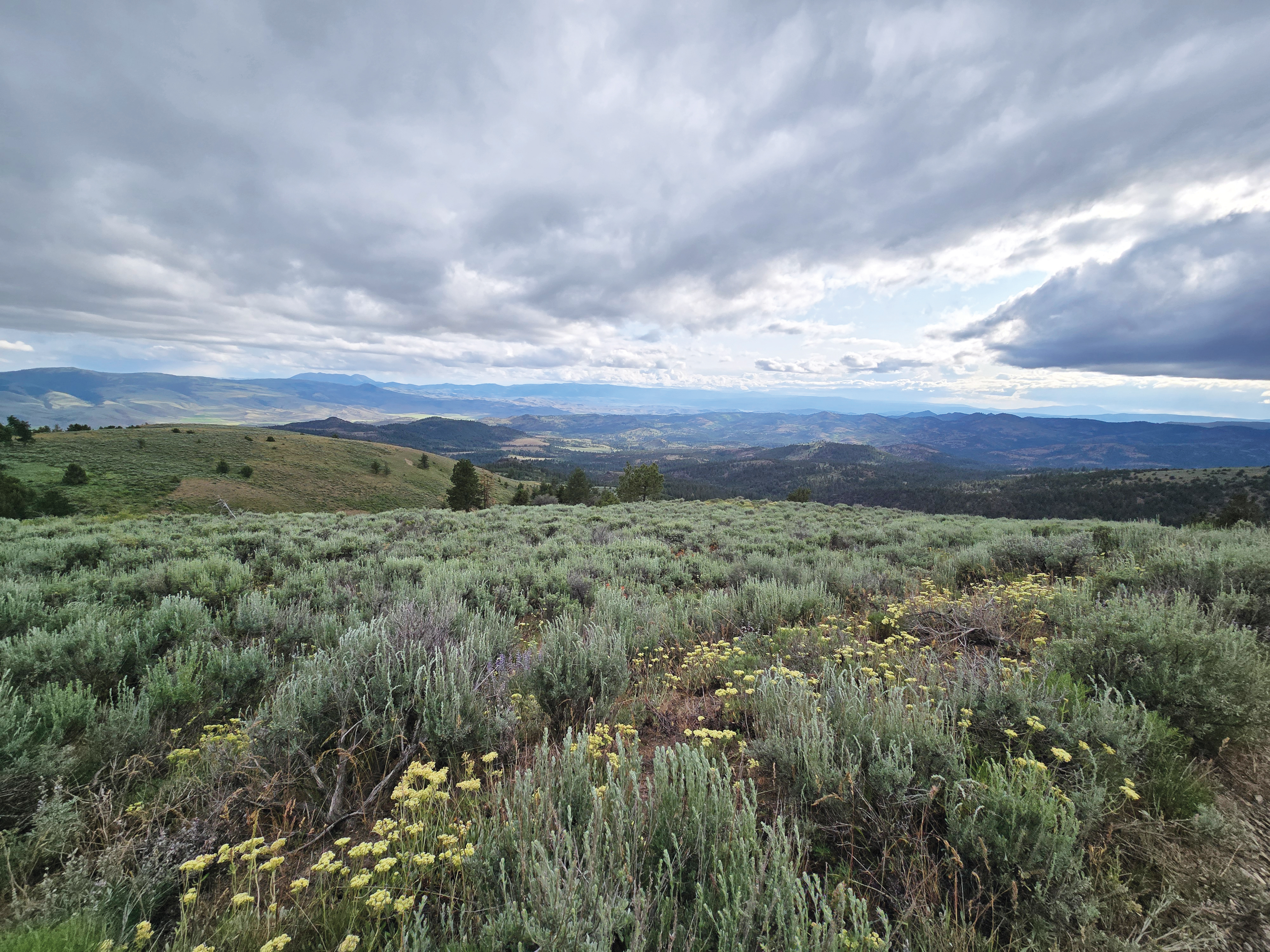Trail trials: MERA forest management first stage reaches conclusion, draws mixed bag of reactions
Published 7:00 am Saturday, April 30, 2022

- Rainwater fills the tracks left behind by heavy equipment used in the Red Apple Forest Management project at Mount Emily Recreation Area outside La Grande on Friday, April 22, 2022. The highly debated forest management project drew a mixed bag of concerns from local residents.
LA GRANDE — The first stage of a highly debated forest management project has reached completion at the Mount Emily Recreation Area.
The Red Apple Forest Management project at MERA was introduced by Union County for improving forest health and reducing wildfire risk as well as conducting logging for profit, with the proceeds going back into the recreation area.
The plan was the subject of a back-and-forth debate for months, with numerous citizens and residents of MERA concerned for the safety and condition of MERA’s trails, landscape and wildlife. With this year’s section of forest management work in the books, the county is set to gather public input on the project at the upcoming MERA Advisory Committee meeting on Tuesday, May 3.
“We’re through about 50 acres of 300, so not much of a start, but it’s a start,” Union County Parks Coordinator Sean Chambers said. “I think it’s a lot of work to get done, but I’m excited to keep it going.”
ReedCo Forestry, of Union, agreed to take the bid on Jan. 5 and began work on the recreation area in early February — the timber organization finished the first stage of the two-year project in roughly one month. Chambers noted that the contract period states two years of work to be performed by ReedCo but that no guarantees can be made for when the project will be fully completed.
The project aims to limit wildlife danger across the 300-acre Red Apple area in the southeast section of the recreation area. The work includes thinning, mastication and removal of fuels. According to Chambers, the final revenue from the logging portion of the project will not be fully determined until the project concludes.
The bulk of the first phase of the work took place off of the Igo Lane entrance to MERA. Primary thinning and logging was done in the area near the Lower Hotshot, Skills and Bridleway trails. The affected area will have no future work, except for the burning of large slash piles that will take place early next winter.
“Part of the contract is the cleanup, so the burning will be on the contractor. We’ll follow up with some vegetation management that’s not on the contractor,” Chambers said. “That will be something the county coordinates with other contractors or does ourselves.”
The timing of the project, which was pushed back slightly to allow for more public feedback, was dependent on frozen conditions in order to reduce the impact on the land and trails.
Several trails saw damage as part of the work, primarily with ruts from machinery on the Bridleway and Lower Hotshot trails. Logs and limbs from the northern section of the work area were moved to the lower Bridleway area. The soil damage has drawn criticism from a number of residents, a topic that will be discussed at the upcoming MERA Advisory Committee meeting.
“Those things do happen and it will come back,” Chambers said. “From all the professionals and feedback I’ve talked to, everyone is pleased with the outcome and what’s been achieved.”
Local concerns
Not everyone is pleased, however. Bart Barlow, a member of the advisory committee and resident of MERA, reached out to the county to assist in organizing local hikers, mountain bikers and other members of the community to repair damage to trails and mitigate watershed soil and erosion impacts.
“If the county really cared about MERA and the community, they would schedule a walkover right now with the public to explain what was done and to learn what was good and what was bad about it so that we don’t make this mistake again,” he said.
Barlow, who worked with Boise Cascade when the company owned and logged the area, stated his disagreement with the logging methods used in the Igo Lane area. He said disturbed soils, displaced ground, compaction and runoff could have been avoided.
“The deeper the snow cover, the less likely those soils are to freeze,” he said. “These are things that could have been prevented with an appropriate method of logging, which they decided not to select because of cost.”
After being purchased by Union County in 2008, MERA has seen countless hours of volunteer work and locally funded trail projects. Barlow voiced displeasure on behalf of the many MERA trail advocates who have spent time and money on the trail system.
“They need to restore the trails in a timely manner, because the county did not pay any money for those trails,” Barlow said. “They were built by donations from people in the community and volunteer hours. To be fair, they need to fix all that.”
Barlow noted that some MERA residents and users are reluctant to volunteer efforts to clean up a mess the county made.
“I know at least 30 people that won’t lift a shovel to help. They feel like the county slapped us in the face with this, so let them fix the trails,” Barlow said. “My take was, let’s collaborate and get the trails back and running. Let’s do a walkover to talk about the good and the bad and we can just move on.”
Rehabilitation
With MERA’s most high-traffic visitation months on the horizon, Chambers noted that the unpredictability of spring weather plays a role in the cleanup process, and he emphasized that it will take time to get MERA back to the way it was before the forest management project.
“One day of good weather doesn’t make for good work construction conditions,” he said. “If we can string together a few nice days, it really does dry out the soil to where we can make some improvements. By and large, that hillside is still very wet.”
According to Chambers, that process will include grass seeding monitored by the county, reseeding landings after controlled burns of slash piles, weed control and letting certain areas heal naturally.
“We’re working with the seasons and the timeliness of it all,” Chambers said. “Two years from now, someone who knew no better would probably walk through there and not be able to tell anything happened. That’s the hopeful outcome, but it’s going to take a couple years to get back to that phase.”
The MERA Advisory Committee Meeting is set to take place at 6 p.m. on May 3. The public can participate via Zoom or on Webinar at 819 8627 1962 with passcode 504707.






